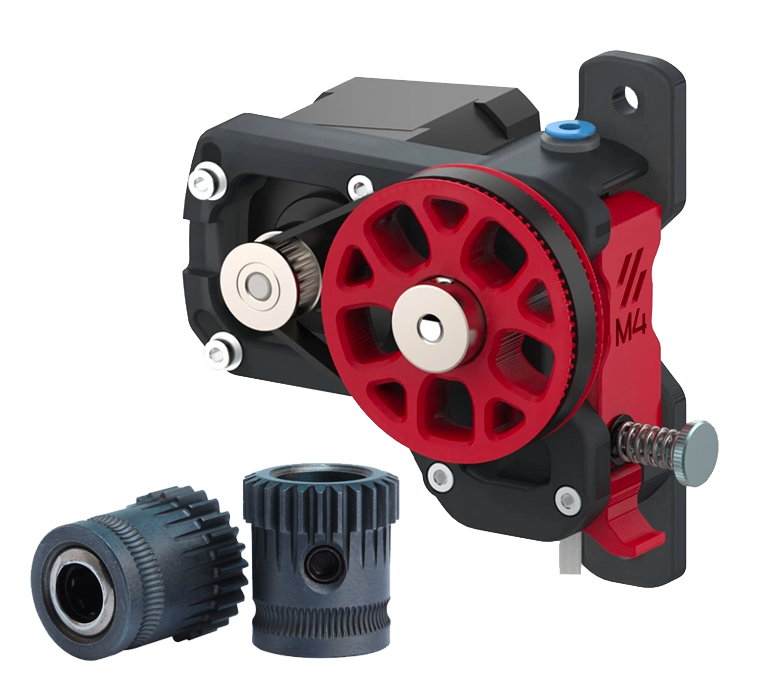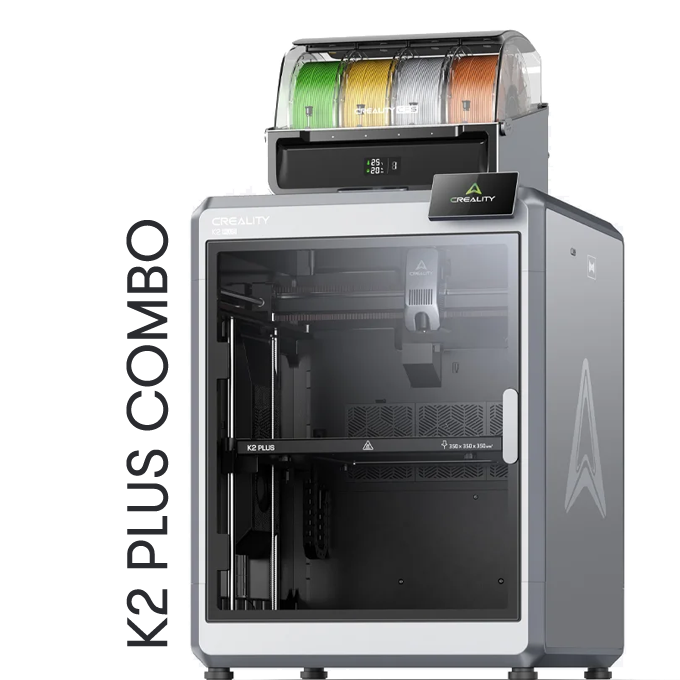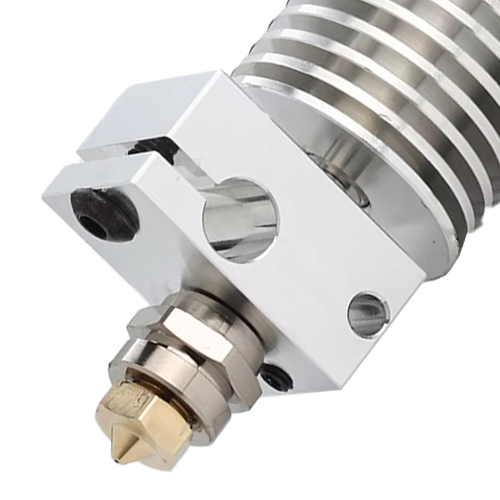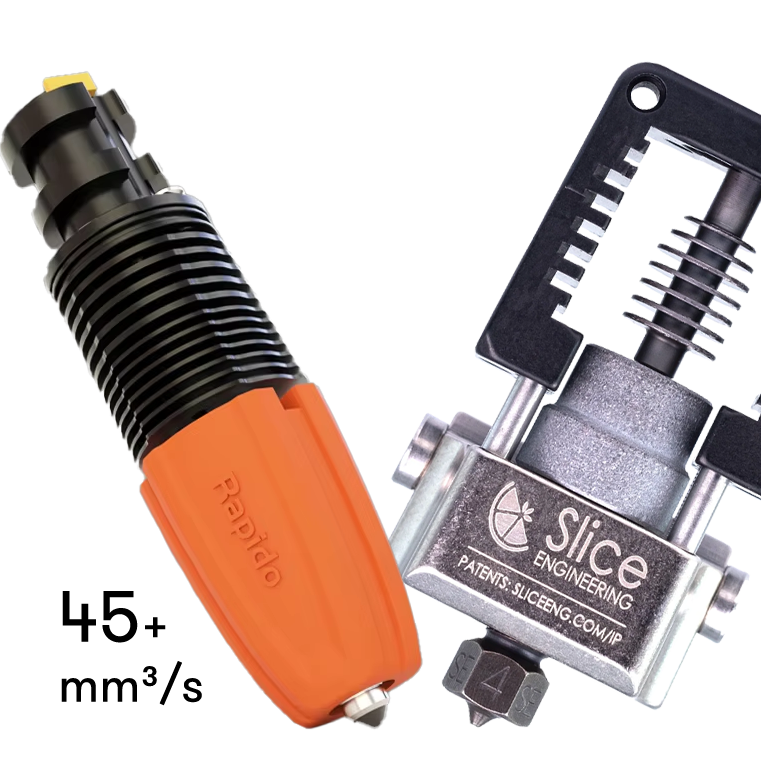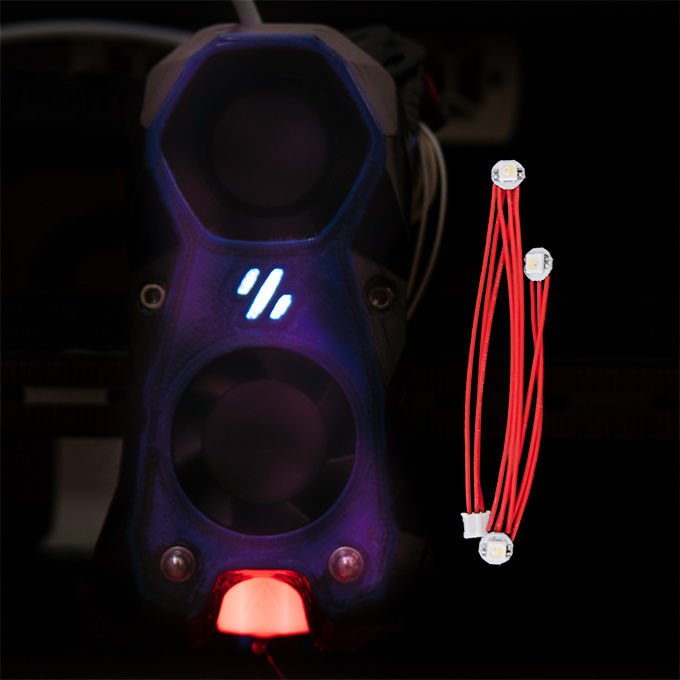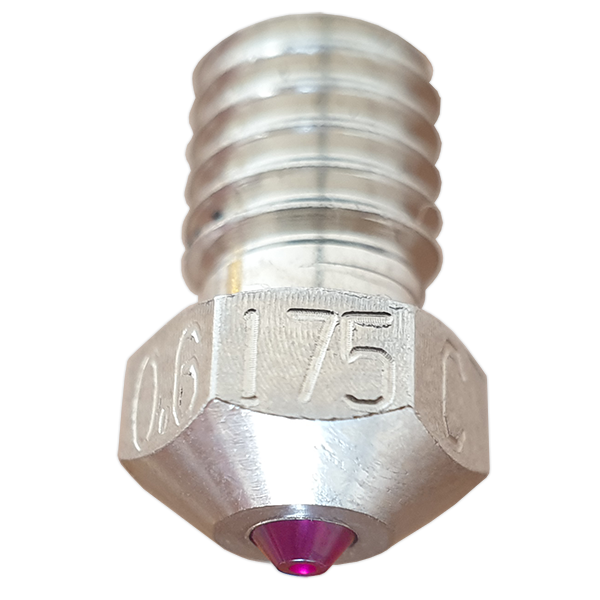The extruder is the heart of your FDM 3d printer. It pulls the filament from a spool and pushes it to the hotend, where it melts. Its capability to supply filament consistently down to the nozzle depends on its grip force (mechanics) and on fine-tuning the extruder stepper motor. In this review, we won’t consider the stepper motor settings, because they are set in the firmware. The objective of our top 5 extruders review is to help you choose a reliable dual drive (dual gears) mechanical design for the extruder. This is a prerequisite to achieving perfect print quality with various filaments and printing speeds.
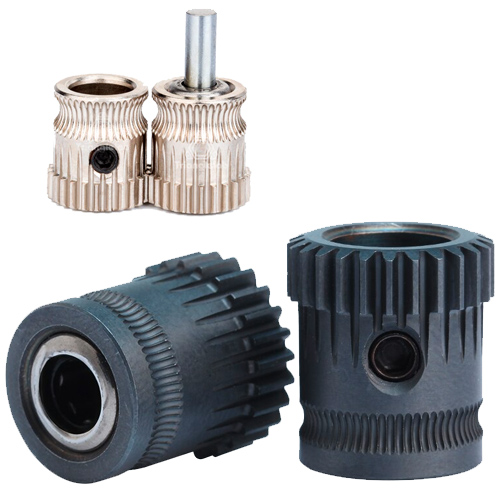
Since the beginning of 3d printing, extruders work on the same principles. The filament is moving between two or more gears. One of the gears is connected to a stepper motor and moves the filament forward (extrusion) or backward (retraction). Another gear is spring-loaded and assures the grip force on the filament.
The design and the durability of the gears are essential for good grip. Modern extruder gears are machined from hardened steel and last for thousands of print hours. Some are also nano-coated for an even longer lifespan.
A few years ago there were 2 companies manufacturing superior dual-gear extruders – E3D with its Titan extruder and Bondtech with its BMG extruder. Today, there are more manufacturers, improved machining and gear processing, and better designs at a lower cost. Among the best extruders, there are also user-contributed, DIY devices. Let’s see our top 5 dual-drive extruders for 3d printing:
Top 5 dual-drive extruders
- TBG-LITE extruder (direct best, bowden possible)
- Orbiter extruder V2 (direct)
- Sherpa extruder (direct)
- Trianglelab DDB extruder V2.1 (direct & bowden)
- Voron M4 DIY extruder (bowden only)
1. TBG Lite extruder
TBG Lite is a new generation performant and lite dual gear extruders. It is designed to match the extremely lite NEMA14 round pancake stepper motors from LDO/Moon.
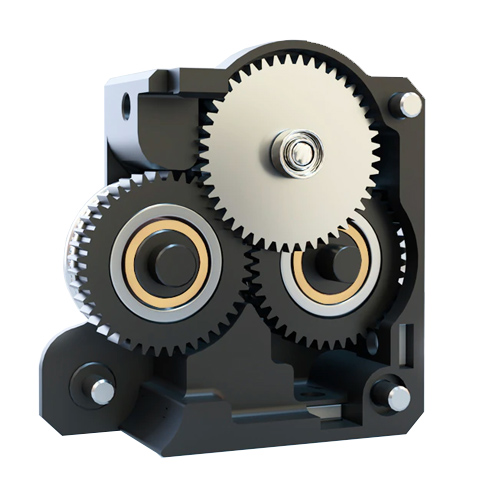
Reduction ratio is 11.53125:1 and steps per mm are 615(16x)
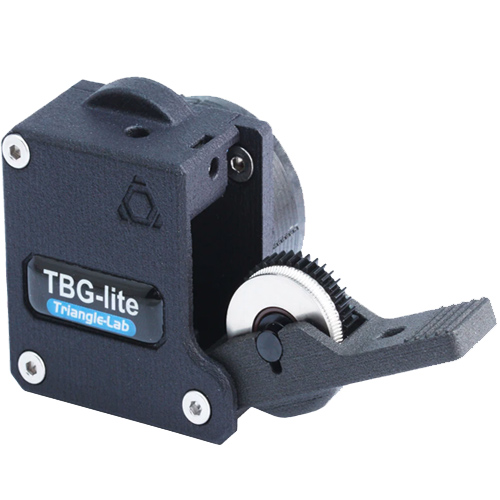
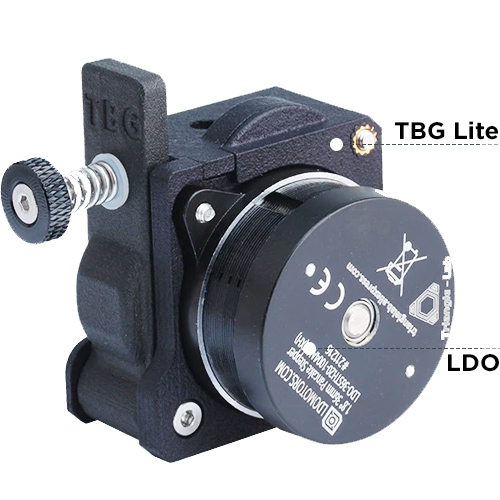

1. CNC machined POM cogwheel
2. Hardened stainless steel
3. Igus Wear-resistant bushing
4. Aluminum shaft (black oxidation)
The internal design of the TBG Lite Extruder is based on three large gears. They have very dense teeth for superior filament grip.
In order to implement the TGB Lite extruder on your printer, you’ll have to design and print an adapted toolhead (direct) or mount (bowden) for your printer. Triangle-Lab is selling also a complete toolhead for TGB Lite for V-wheels printers like Creality, Anycubic, etc.
Check the current TBG Lite price on:
2. Orbiter V2 Extruder
The new Orbiter V2 is the perfect extruder for printing flexible filaments. It handles even flexibles with hardness 85A. Just like the TBG, it is very lite and uses NEMA14 round pancake stepper motors. It is primarily for direct extruder setup.
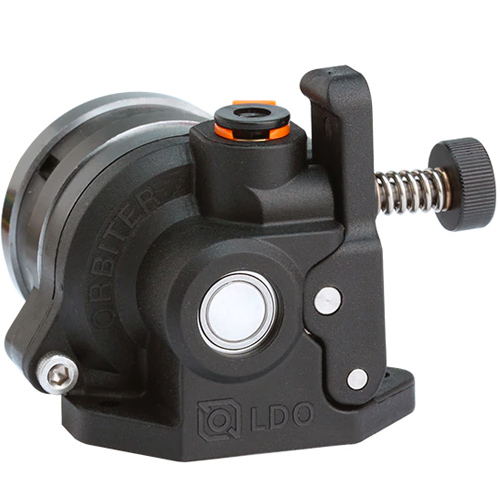
The Orbiter V2 extruder weighs only 135 g. It is even lighter and more compact than the previous generation of Orbiter V1.5. This is achieved by shorter drive gears.
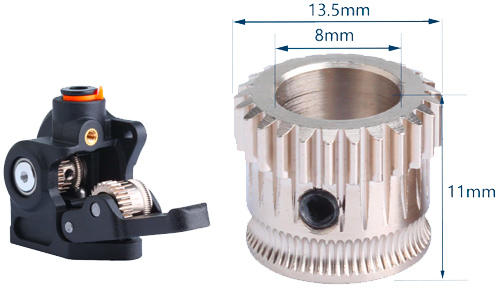
There are nice direct printhead designs with the Orbiter extruder for various printers from Ender to Voron. If you have an Ender-3 or CR-10, this printhead is a good upgrade to a less bulky direct extruder solution.
Check the current Orbiter V2 price at these suppliers:
3. Sherpa MINI extruder
Another light dual-geared extruder for direct printhead. It is possible to buy the gears set and print the plastic parts yourself with the supplied STL files from the developer’s GitHub. If you are looking for the lightest direct extruder this is it.
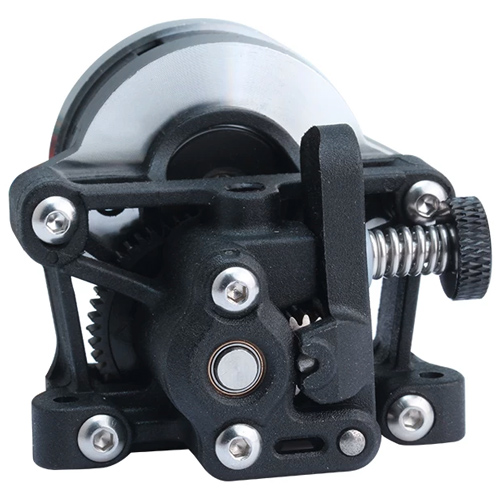
4. TriangleLab DDB Extruder V2.1
It is a classic dual-drive extruder for association with NEMA17 stepper motors. The DDB extruder works well in direct and in bowden set-up. There are many other manufacturers building the same type of extruder as its design is more than 5 years old. It is commonly agreed in 3d printing communities though, that TriangleLab extruders have superior gears quality.
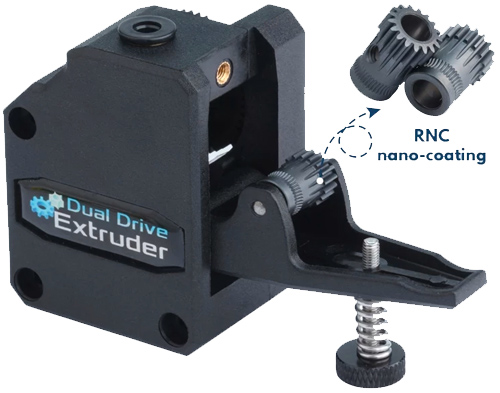
It is not the lightest extruder, but the most versatile one. The V2.1 shares the same dimensions and mounting options like previous versions and like the Bondtech BMG extruder. It gives you access to a myriad of user contributed printable toolheads and mounts for many modern and legacy printers (Thingiverse).
Check the current price:
5. Voron M4 DIY extruder
The M4 is a printable DIY extruder from VoronDesign. It uses the same gears as the DDB extruder and is designed for bowden set-up only.
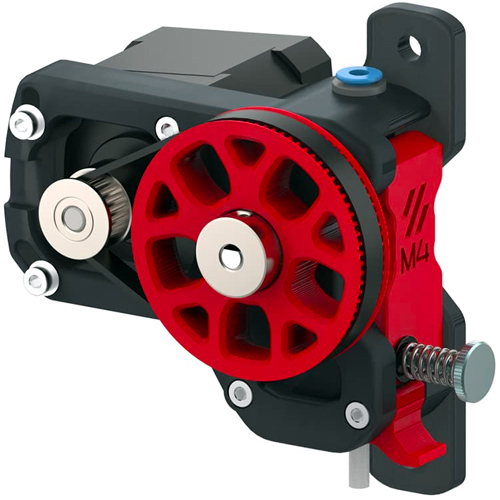
M4 is the perfect extruder for high-speed printing with non-flexible filaments. Bowden setup allows using very light toolhead (hotend and fans only) with small inertia, which in turn increases the print quality at high speeds.
The Voron M4 relies on a belt-driven design with a gear ratio 4:1. This design provides high torque without any noise. It is mounted on the frame of the printer and can be associated with a powerful NEMA17 motor for reliable operation at low motor temperatures.
Conclusion
At this point, you may wonder what extruder to choose among those 5. If you fancy direct toolheads and printing TPU/flexibles is important for you, go with TGB, Sherpa MINI, or Orbiter V2. These extruders have similar performance and weight for normal speeds/acceleration up to 120mm/s. For higher speeds there are slight differences in performance and motor heating – Sherpa Mini would give you a bit cooler motor temperatures.
If you go bowden, Voron M4 is clearly the best choice, followed by the DDB extruder. Both can be combined with a powerful NEMA17 motor and reach insane torque. DDB, however, could be used also as a direct extruder and it benefits from many user-contributed integrations, available on Thingiverse.
Related reviews: Top 3 best direct-drive ToolHeads for Ender-3
